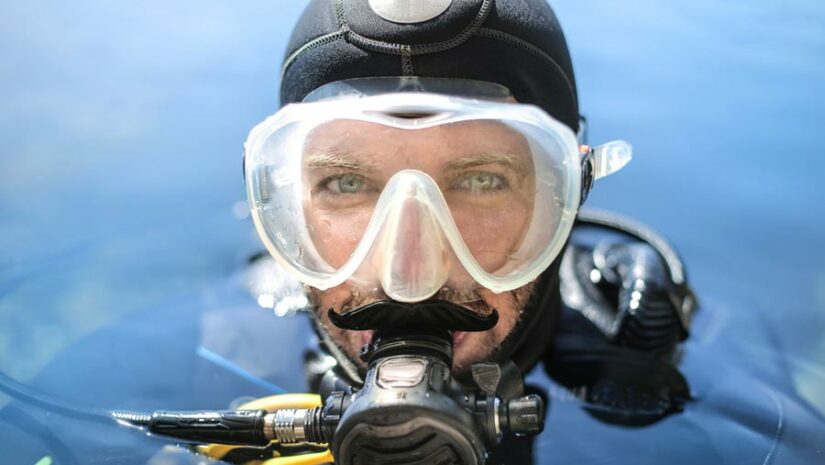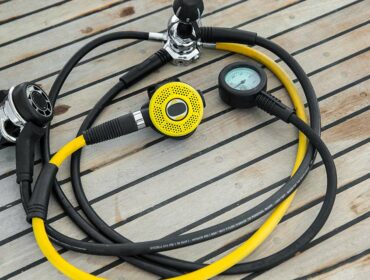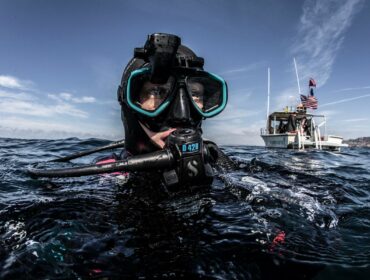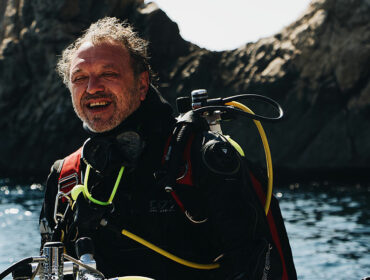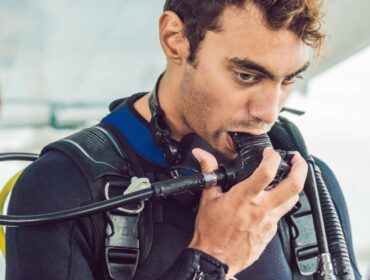Even though Regulator recovery and clearing is one of the most basic things taught to a diver during his open water certification course, it is still a crucial skill that several divers are reluctant to learn or practice after their certification courses. Regulator mouthpieces get knocked out of divers’ mouths all the time, and can easily get snagged on BCD’s. In our certification courses we learn to recover our scuba regulators while kneeling on a steady platform such as the sea bed or the bottom of a swimming pool, which is why it is important to practice recovery where you may not be able to steady yourself.
The important things to remember while recovering your regulator is :
Don’t Panic – calmly try and locate your regulator mouthpiece using the practiced methods
Exhale continuously when you lose your second stage, to prevent lung over expansion injuries. Avoid holding your breath.
Sweep Method
The sweep method is the most commonly used technique to recover a second stage regulator. It involves the diver leaning towards the right to let gravity move the second stage away from you and then stretching out your right hand in front of you and making a sweeping arc, back and right towards the bottom of your scuba tank so that the regulator hose should now be in front of you, and then bringing your arm forward catching the rouge regulator. You then bring the regulator to your mouth purging the piece first before resuming normal breathing. The whole process takes less than a few seconds and can be repeated a couple of time if you are unsuccessful at first. Always remember to continuously breathe out through the process to prevent your lungs from over expansion, should you be unconsciously ascending while looking for your dive regulator.
Over-The-Shoulder Reach Technique
The Over-the-shoulder reach technique is one of the more effective techniques for lost scuba regulator recovery. Lean towards the right turning your neck to the right while reaching back with your right hand until you feel the first stage of your regulator while at the same time lifting the bottom of your tank with your left hand so you can see the first stage. Then following the hose from the first stage with your right hands thumb and forefinger bring it forward so you can find the second stage and retrieve it. Many find this technique a little tricky and prefer the sweep method, however with a little bit of practice, the over-the-shoulder retrieval is more reliable.
Secondary Regulator
What if you cannot retrieve your regulator using both the sweep method or over the shoulder reach? Don’t panic, use your spare secondary regulator that should be clipped onto the front of your BCD, unclip it and begin breathing normally. Then calmly try to locate your main second stage once again.
Get your Buddy to Assist
Sometimes it helps to signal your buddy to help you spot your missing regulator, as it could be snagged in your BCD belts. Use your spare regulator while your dive buddy assists you with retrieval. Some divers comfortable with removing their BCD’s while maintaining buoyancy, do so to free their tangled hoses. Always remember to have your buddy standing by to perform buddy breathing if you ever attempt to try this.
Clearing
Clearing your regulator is as simple as exhaling sharply into it. All the water will be expelled from the regulators exhaust valve. The other method to clear your mouthpiece is to use the purge valve. A quick two bursts of the purge valve immediately before putting it into your mouth should remove any water or debris from the chamber. Or alternately depress the purge valve while it is in your mouth blocking the mouth piece with your tongue to prevent the burst of air into your mouth. Be careful to release the purge valve once you resume inhaling to prevent over filling of the lungs.
Scuba Divers should practice all of these methods in a controlled environment on a regular basis, so that they remain calm when the situation may occur. Use the method you are most comfortable with using and ensure you practice more than just one.

